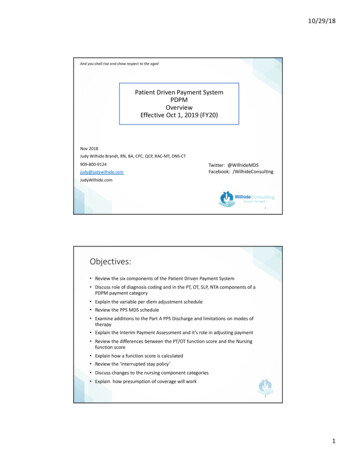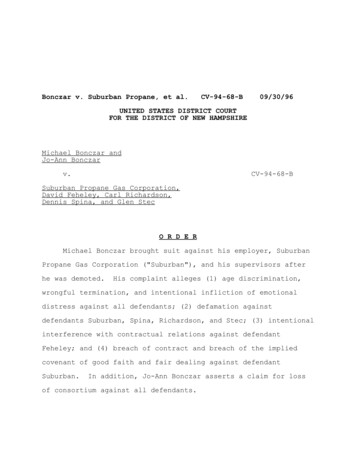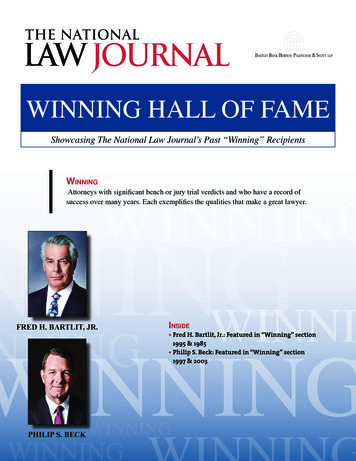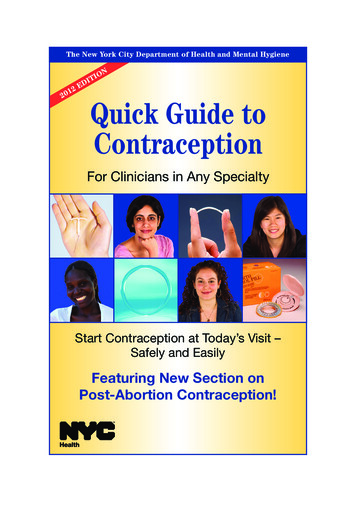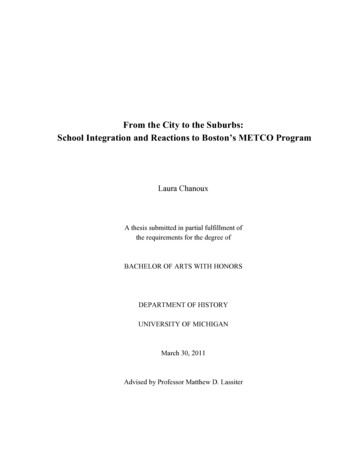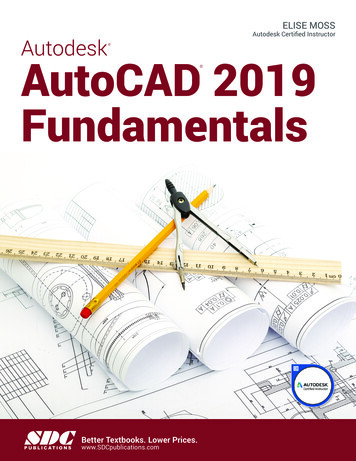
Transcription
SpondylolisthesisDESCRIPTIONSpondylolisthesis is the slippage of one or more vertebrae,the bones of the spine. Many causes of slippage of thevertebra are possible; these include stress fracture(spondylolysis), which is often seen in athletes, and degenerative and congenital causes. Spondylolisthesis tends tooccur in adolescent athletes. The stress fracture occursbecause the mechanisms of repair fail to keep up with thedamage caused by the repetitive force. Spondylolisthesismay or may not cause symptoms and may be found onlyon x-ray examination.COMMON SIGNS AND SYMPTOMSChronic dull ache in the low back that is worse withhyperextension and occasionally with flexion, such asbending at the waistTightness of the hamstring musclesOccasionally, stiffness of the lower backSpasms of the muscles in the backPain, numbness, or weakness affecting one or bothlower extremitiesIf chronic, wasting of affected musclesLoss of bowel or bladder functionCAUSESSpondylolisthesis is most commonly caused by congenitalor degenerative factors, but it may also be related to athletic activities that cause a stress fracture (spondylolysis)of the vertebrae. Rarely, it can occur because of an acutefracture from a sudden blow, severe trauma, or benignor malignant tumor.FACTORS THAT INCREASE RISKAny sport that causes hyperextension (arching) of theback, either excessively with rotation or repetitively,especially football, gymnastics, diving, weight lifting,dancing, rifle shooting, wrestling, tennis, swimming, running, volleyball, track and field, rugby, and contact sportsPoor physical conditioning (strength, flexibility)Inadequate warm-up before practice or playFamily history of spondylolysis or spondylolisthesisPoor techniquePREVENTIVE MEASURESUse proper sports technique.Wear proper protective equipment, and ensure acorrect fit.1106Appropriately warm up and stretch before practice andcompetition.Maintain appropriate conditioning that includes backand hamstring flexibility, back muscle strength andendurance, and cardiovascular fitness.EXPECTED OUTCOMESpondylolisthesis is usually curable with appropriatetreatment.POSSIBLE COMPLICATIONSFrequent recurrence of symptoms, resulting in achronic problem; appropriately addressing the problemthe first time decreases the frequency of recurrence.Chronic pain and nonhealing of the fractureDelayed healing or delayed resolution of symptoms,particularly if sports are resumed too soonProlonged disabilityProgression to even greater slippage, depending on thecause of slippage and the age of the patientGENERAL TREATMENTCONSIDERATIONSInitial treatment consists of rest from the activities thatcause pain, such as hyperextension, and medicationsand ice to relieve pain. As pain subsides, exercises toimprove strength and flexibility and to learn proper backmechanics are started. Referral to a physical therapist orathletic trainer may be recommended for evaluation andfurther treatment, including transcutaneous electronicnerve stimulation (TENS). A back brace may also berecommended. Surgery may be necessary based on thecause of the spondylolisthesis, the age of the patient,degree of slippage, neurologic symptoms, and persistentpain despite appropriate conservative treatment. Surgeryis performed to help the fracture to heal or, more often, tofuse two or more vertebrae together.MEDICATIONNonsteroidal antiinflammatory medications, such asaspirin and ibuprofen (do not take for 7 days beforesurgery), or other over-the-counter pain relievers, suchas acetaminophen, are often recommended. Take theseas directed by your physician, and contact your doctorimmediately if any bleeding, stomach upset, or signs ofan allergic reaction occur.Pain relievers may be prescribed as necessary. Use theseonly as directed. Do not use any heavy machinery ordrive a car while taking these medications.Copyright 2012 by Saunders, an imprint of Elsevier, Inc.
SPONDYLOLISTHESISHEAT AND COLDCold is used to relieve pain and reduce inflammationfor acute and chronic cases. It should be applied for10 to 15 minutes every 2 to 3 hours as needed andimmediately after any activity that aggravates yoursymptoms. Use ice packs or an ice massage.Heat may be used before performing stretching andstrengthening activities prescribed by your physician,physical therapist, or athletic trainer. Use a heat packor a warm soak.WHEN TO CALL YOUR DOCTORSymptoms get worse or do not improve in 2 to 4 weeksdespite treatment.You develop numbness, weakness, or loss of bowel orbladder function.New, unexplained symptoms develop. Drugs used intreatment may produce side effects.1107RANGE OF MOTION ANDS T R ET C H I N G E X E R C I S E SSpondylolisthesisThe exact range of motion and stretching exercisesusually need to be determined on an individual basis.Emphasis is placed on flexion exercises (rounding yourback; pulling your knees to your chest) rather than extension exercises (arching your back), which increase thestresses on the spine that are related to this type of injury.The key point to remember is that if any exercise—rangeof motion, stretching, or strengthening—causes pain toradiate away from your back and toward your buttocksor legs, stop the exercise immediately. The purpose ofthese exercises is to begin to decrease the intensity andthe size of the area of your pain.These are some of the initial exercises you may use tostart your rehabilitation program, until you see yourphysician, physical therapist, or athletic trainer again,or until your symptoms resolve. Please remember:Flexible tissue is more tolerant of the stresses placedon it during activities.A gentle stretching sensation should be felt.If pain or other symptoms radiate away from yourback toward your buttocks or legs, stop the exercisesimmediately.FIGURE 1 From Shankman GA: Fundamental orthopedic management for the physical therapy assistant, St Louis, 1997, Mosby YearBook, p 228.RANGE OF MOTIONLumbar Flexion1. Lie on your back with both legs flat on the floor.2. Bend one hip and knee up toward your chest.3. Grasp your knee with your hands and pull it gentlytoward your chest. Keep the other leg flat on the floor.4. Hold each repetition for seconds, and return tothe starting position. Repeat on the opposite side.5. Repeat this exercise times, times per day.Safran M, Zachazewski J, Stone D: Instructions for Sports Medicine Patients, 2nd Edition
1108SPONDYLOLISTHESISRANGE OF MOTIONLumbar Flexion1. Lie on your back with both legs flat on the floor.2. Bend one hip and knee up toward your chest and thenthe other.3. Grasp your knees with your hands and pull themgently toward your chest.4. Hold this stretch position for seconds.5. Release one knee, allowing the leg to return to thefloor, then release the other.6. Repeat this exercise times, times per day.STRENGTHPelvic Tilt1. Lie on the floor as shown. You may do this exercisewith your knees bent or straight, but it is harder withthe knees straight.2. Tighten your stomach and buttock muscles and pushback flat onto floor. If you do this properly, your pelviswill rotate in the direction shown in the diagram.3. Hold each repetition for seconds. Count out loud,and do not hold your breath.4. Repeat this exercise times, times per day.S TR E N G T H E N I N G E X E R C I S E SSpondylolisthesisThese are some of the initial exercises you may use tostart your rehabilitation program, until you see yourphysician, physical therapist, or athletic trainer again,or until your symptoms resolve. Although emphasis isplaced on strengthening your stomach muscles, otherexercises are presented that promote maintainingproper posture and balance in all of the muscles thatsurround the spine. Please remember:Strong muscles with good endurance tolerate stressbetter.Do the exercises as initially prescribed by your physician, physical therapist, or athletic trainer. Progressslowly with each exercise under their guidance,gradually increasing the number of repetitions andweight used.Copyright 2012 by Saunders, an imprint of Elsevier, Inc.
SPONDYLOLISTHESISSTRENGTHSTRENGTHQuadruped Lift1. Position yourself on your hands and knees.2. Keep your back flat and parallel to the floor. Do notallow it to arch or move during this exercise.3. Lift your left arm up to shoulder height. Hold this position and lift your right leg to the same height.4. Balance and hold this position for seconds. Countout loud, and do not hold your breath.5. Return to starting position, and repeat with the opposite arm and leg.6. Repeat this sequence times, times per day.1109Partial Sit-ups1. Lie flat on your back with your hands resting on yourthighs.2. Tuck your chin to your chest, and slowly sit up, untilyou touch the top of your knees.3. Hold this position for a count of . Count out loud,and do not hold your breath.4. Return to the starting position.5. Repeat this exercise times, times per day.POSTURE AND BODY MECHANICSSpondylolisthesisMaintaining the most appropriate posture and usingcorrect body mechanics can have a significant effecton back pain. The following are basic suggestionsregarding proper posture and body mechanics. Theseshould be specifically discussed with your physician,physical therapist, or athletic trainer. Please remember:STRENGTHDouble-Leg Hold1. Lie on your back with your hips and knees bent.Good posture minimizes the stress and strain on anyportion of your spine.Incorporate these posture principles into all of yourdaily and recreational activities.2. Bend your legs toward you as shown.3. Tighten your stomach muscles, and press your backinto the floor.4. Keeping your back flat on the floor, slowly lower yourlegs to the floor. When you feel your back start to arch,stop and hold that position. Count out loud to ,and do not hold your breath.5. Return to the starting position.6. Repeat this exercise times, times per day.Safran M, Zachazewski J, Stone D: Instructions for Sports Medicine Patients, 2nd Edition
1110SPONDYLOLISTHESISCORRECT LIFTING TECHNIQUESCORRECT SITTING POSTURESDODOLift with your legs, keeping your back straight.Use a footstool for objects that need to be placed or Sit erect. Use a lumbar roll, cushion, or pillow. Use a chairretrieved from high locations.that has a high enough back to support your back up toUse two people to lift heavy or awkward objects.your shoulder blades.INCORRECT LIFTING TECHNIQUESINCORRECT SITTING POSTURESDO NOTDO NOTDo not lift with your legs straight and your back bent.Do not lift objects that are too heavy over your head. Do not slouch or slump. Maintain a proper position in theNever lift and twist at the same time.chair.Do not lift an object that is too heavy or awkwardlyshaped without help.Copyright 2012 by Saunders, an imprint of Elsevier, Inc.
1. Lie on your back with your hips and knees bent. 2. Bend your legs toward you as shown. 3. Tighten your stomach muscles, and press your back into the floor. 4. Keeping your back flat on the floor, slowly lower your legstothefloor.Whenyoufeelyourbackstarttoarch, stop and hold that position. Count out loud to _, and do not hold your breath. 5.
